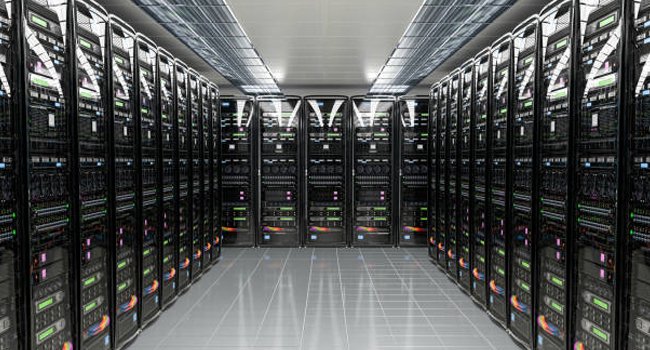How the Pandemic and Its Aftermath Boosts the Case for VDI

The adoption of remote work has never been as rushed as in the last couple of years, fueled by the global crisis that was COVID-19 and the movement limitations it brought about. Amidst all the adjustments that businesses have had to make to cope with the situation, Virtual Desktop Infrastructure (VDI) and related cloud solutions paved the way in helping organisations successfully shift to a remote workforce.
Remote Work Now and Beyond

Pandemic restrictions have eased, yet disruptive technologies such as VDI continue to be in high demand as the world prepares for a future that’s different from what we’ve known up until two years ago. The traditional office setup, for instance, has been upended in exchange for work approaches that are more future-ready.
The 2022 Everywhere Workplace Report conducted by software company Ivanti offers some useful insight into how employees feel about working remotely. One of the most telling statistics that Ivanti reported was that of the 4,510 office workers and 1,609 IT professionals surveyed across the US, Australia, UK, France, and other EU countries, 9 out of 10 (87%) no longer wanted to work in the office full time. This is further supported by Buffer’s 2022 State of Remote Work Report where 97% of 2,118 respondents said that they would like to work remotely at least some of the time for the rest of their career.
These figures and other similar information from other reports point to one thing: working from anywhere is no longer just practice for future pandemic-level circumstances—it’s the present. What’s helping power mobile working, and ensuring that remote work environments are both efficient and secure are VDI solutions.
What is VDI?

VDI refers to the technology that enables the delivery of virtual machines or VMs, which are either hosted on-premise or in the cloud. These virtualized or hosted desktops are managed from a central server and deployed to end clients via a network, usually, the internet. Users, wherever they may be located, can then access applications and data from their devices in the same way as they would from their desktops and laptops in the workplace.
While various cloud solutions have emerged as useful tools for enterprises as they quickly adapt to the pandemic-spurred digital transformation, VDI technology has by far proven to be one of the most ideal solutions for remote work environments.
Advantages of VDI for Remote Work

Organisations, regardless of size, have had to rapidly think out of the box on how they can keep their businesses running, employees working, and data and applications secure in the midst of it all. VDI technology ticks most (if not all) of the checkboxes that enterprises need for successful telecommuting arrangements, especially for enterprises with huge numbers of endpoint devices. Here’s how:
- VDI facilitates rapid deployment. One of the most pressing concerns for businesses at the height of COVID-19 was how to keep operations running and employees productive even while on lockdown. VDI helped realise these by enabling IT administrators to quickly set up virtual machines from one central place and deploy them to employees working from their homes.
End users were then able to access these hosted desktops from their devices—PCs, laptops, tablets, and other thin clients, through the internet. The entire process can be carried out in a matter of days (and even hours), cutting down weeks or months of waiting for systems and applications to be installed on new computers and laptops.
- VDI allows improved governance and better security. Another major factor to seriously consider with the work from anywhere approach is the security risk it poses. An environment of distributed machines presents limitless opportunities for cybercriminals to get hold of confidential information and other corporate data assets via ransomware, malware, and various other threat vectors.
With VDI, the applications and data are stored in the company servers and not in the employees’ desktops or laptops. This means sensitive data is not compromised even if a device gets lost or stolen. Further, virtual desktops provide end users only with the specific applications and data they need, allowing administrators to limit their access to other resources and enforcing policies that can further reduce cybersecurity risks.
- VDI provides superior performance at a lower cost. VDI technology enables companies to run multiple hosted desktops and virtual machines on a powerful data center infrastructure. Employees who use low-spec laptops or thin clients such as Chromebooks while working remotely need not worry of poor performance from their devices because the applications are actually running on the mainframe servers.
With this, companies need not provide their mobile workforce with high-powered laptops and can opt instead for more cost-effective devices. They also don’t have to purchase additional hardware equipment to support more devices because, with a cloud-based VDI solution, computing resources can be scaled up or down as needed. All of these lower the organisation’s total capital expenditure and upfront costs for hardware upgrades.
- VDI simplifies IT administration. The centralised architecture of VDI also offers the benefit of simplified desktop administration. Many administrative tasks—software updates, security patches, etc., are usually time-consuming and tedious to perform especially if these implementations are carried out individually on every single device.
VDI eliminates the need to perform upgrades for each device because system admins can push updates and patches to applications all at once from the central server. This frees up valuable time for IT personnel, allowing them to focus more on their core functions.
Is Your Workforce Future-Proofed?

If there’s one thing that we’ve learned from the recent pandemic, it’s that our organisations should be ready for anything. Besides, global crisis or not, it looks like hybrid working is here to stay.
Ensure that you have the right tools in place to better implement your remote working initiatives. Consult with your IT managed services provider today for the VDI solution or cloud services that will best fit your needs.
Related Posts
By accepting you will be accessing a service provided by a third-party external to https://www.htl.london/